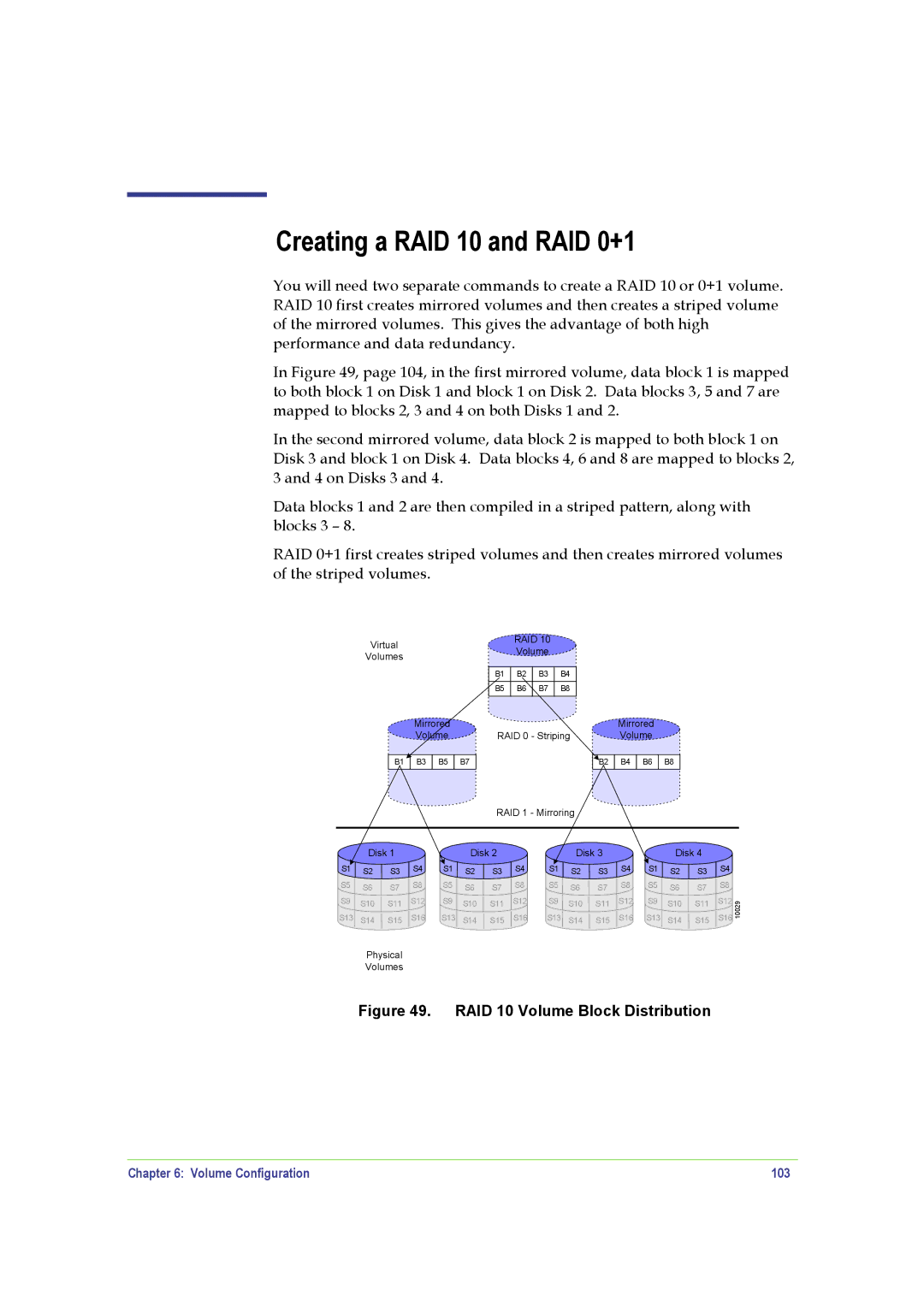
Creating a RAID 10 and RAID 0+1
You will need two separate commands to create a RAID 10 or 0+1 volume. RAID 10 first creates mirrored volumes and then creates a striped volume of the mirrored volumes. This gives the advantage of both high performance and data redundancy.
In Figure 49, page 104, in the first mirrored volume, data block 1 is mapped to both block 1 on Disk 1 and block 1 on Disk 2. Data blocks 3, 5 and 7 are mapped to blocks 2, 3 and 4 on both Disks 1 and 2.
In the second mirrored volume, data block 2 is mapped to both block 1 on Disk 3 and block 1 on Disk 4. Data blocks 4, 6 and 8 are mapped to blocks 2, 3 and 4 on Disks 3 and 4.
Data blocks 1 and 2 are then compiled in a striped pattern, along with blocks 3 – 8.
RAID 0+1 first creates striped volumes and then creates mirrored volumes of the striped volumes.
Virtual | RAID 10 | |
Volume | ||
Volumes | ||
|
B1 | B2 | B3 | B4 |
B5 | B6 | B7 | B8 |
Mirrored |
| Mirrored |
Volume | RAID 0 - Striping | Volume |
B1
B3 B5
B7
![]()
![]() B2
B2
B4 B6
B8
| RAID 1 - Mirroring |
|
|
Disk 1 | Disk 2 | Disk 3 | Disk 4 |
S1 | S2 | S3 | S4 | S1 | S2 | S3 | S4 |
|
|
|
| ||||
S5 | S6 | S7 | S8 | S5 | S6 | S7 | S8 |
|
|
|
| ||||
S9 | S10 | S11 | S12 | S9 | S10 | S11 | S12 |
S13 | S14 | S15 | S16 | S13 | S14 | S15 | S16 |
S1 | S2 | S3 | S4 | S1 | S2 | S3 | S4 |
|
|
|
| ||||
S5 | S6 | S7 | S8 | S5 | S6 | S7 | S8 |
|
|
|
| ||||
S9 | S10 | S11 | S12 | S9 | S10 | S11 | S12 |
S13 | S14 | S15 | S16 | S13 | S14 | S15 | S16 |
10029
Physical
Volumes
Figure 49. RAID 10 Volume Block Distribution
Chapter 6: Volume Configuration | 103 |
